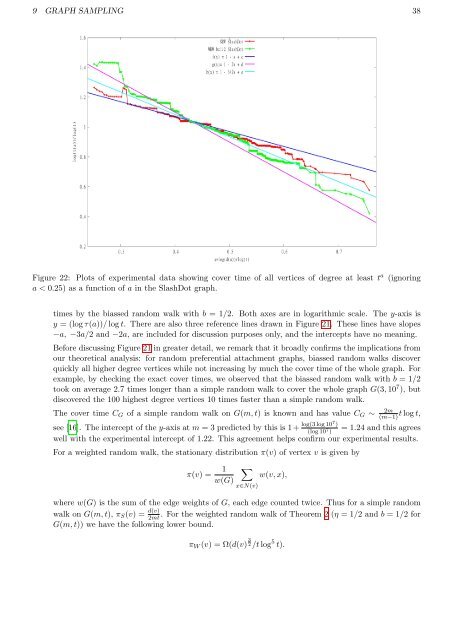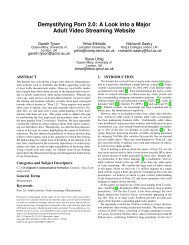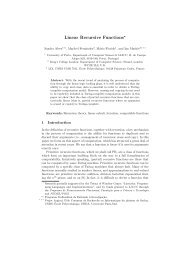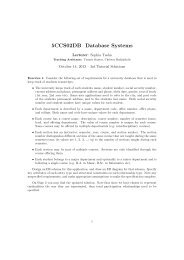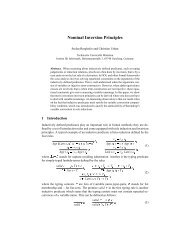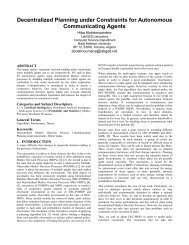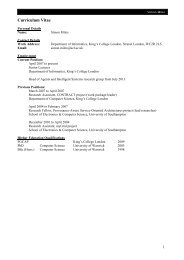Upgrade Report - Department of Informatics - King's College London
Upgrade Report - Department of Informatics - King's College London
Upgrade Report - Department of Informatics - King's College London
- No tags were found...
Create successful ePaper yourself
Turn your PDF publications into a flip-book with our unique Google optimized e-Paper software.
9 GRAPH SAMPLING 38Figure 22: Plots <strong>of</strong> experimental data showing cover time <strong>of</strong> all vertices <strong>of</strong> degree at least t a (ignoringa < 0.25) as a function <strong>of</strong> a in the SlashDot graph.times by the biassed random walk with b = 1/2. Both axes are in logarithmic scale. The y-axis isy = (log τ(a))/ log t. There are also three reference lines drawn in Figure 21. These lines have slopes−a, −3a/2 and −2a, are included for discussion purposes only, and the intercepts have no meaning.Before discussing Figure 21 in greater detail, we remark that it broadly confirms the implications fromour theoretical analysis: for random preferential attachment graphs, biassed random walks discoverquickly all higher degree vertices while not increasing by much the cover time <strong>of</strong> the whole graph. Forexample, by checking the exact cover times, we observed that the biassed random walk with b = 1/2took on average 2.7 times longer than a simple random walk to cover the whole graph G(3, 10 7 ), butdiscovered the 100 highest degree vertices 10 times faster than a simple random walk.The cover time C G <strong>of</strong> a simple random walk on G(m, t) is known and has value C G ∼2m(m−1)t log t,see [16]. The intercept <strong>of</strong> the y-axis at m = 3 predicted by this is 1+ log(3 log 107 )= 1.24 and this agrees(log 10 7 )well with the experimental intercept <strong>of</strong> 1.22. This agreement helps confirm our experimental results.For a weighted random walk, the stationary distribution π(v) <strong>of</strong> vertex v is given byπ(v) = 1w(G)∑x∈N(v)w(v, x),where w(G) is the sum <strong>of</strong> the edge weights <strong>of</strong> G, each edge counted twice. Thus for a simple randomwalk on G(m, t), π S (v) = d(v)2mt. For the weighted random walk <strong>of</strong> Theorem 2 (η = 1/2 and b = 1/2 forG(m, t)) we have the following lower bound.π W (v) = Ω(d(v) 3 2 /t log 5 t).


